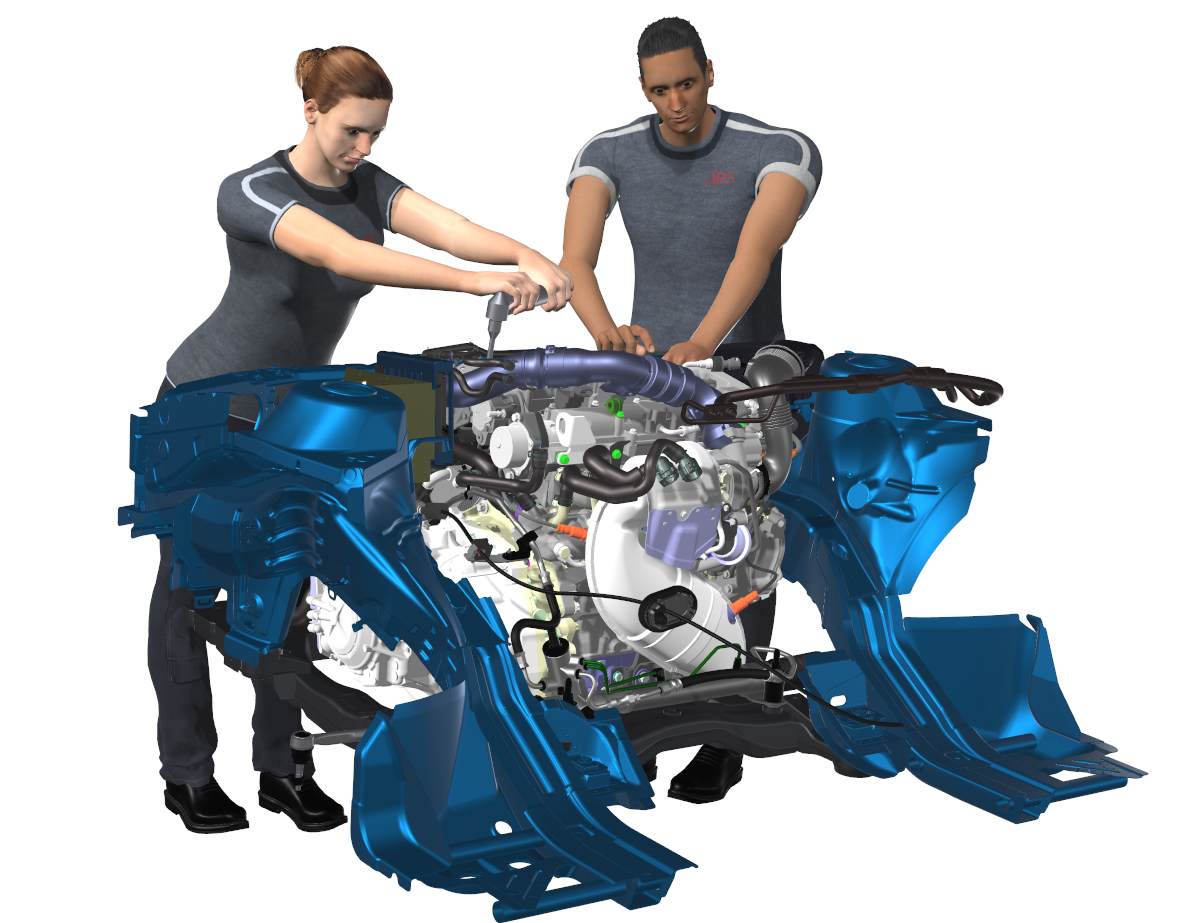The human being plays a decisive role not only as an actor in a working environment, but also as an operator of a vehicle or a mobile machine. How he solves the work task has a significant influence on the physical strain that the person experiences. Operator or action models are mathematical descriptions of actions including decision-making processes that enable the simulation of such action sequences and their optimization according to ergonomic criteria.
Our research work on »action models« aims at the modeling and simulation of human actions influenced by perceptions of the environment, as well as coupling the typically time-discrete action models with models of system dynamics.
A coupling of action and digital human models opens up the possibility:
- to implement roughly specified tasks in action sequences (e.g. »take a certain component, assemble it at a certain location« as part of an assembly process),
- to calculate individual partial steps of such a sequence by means of optimum control,
- to categorize actions according to given criteria, e.g. as economically efficient, ergonomically favorable or as health-friendly as possible.
With this human-machine interaction driving simulator we can systematically analyze many work processes and optimize them, e.g. with regard to physical strain.

